Squats, pee swaps and the ‘roller-coaster ride’ of making a panda baby in Singapore
Which was the ‘smart bear’, and which made great progress in the mating process? Talking Point gets the inside scoop from the Wildlife Reserves Singapore team looking after Kai Kai and Jia Jia.
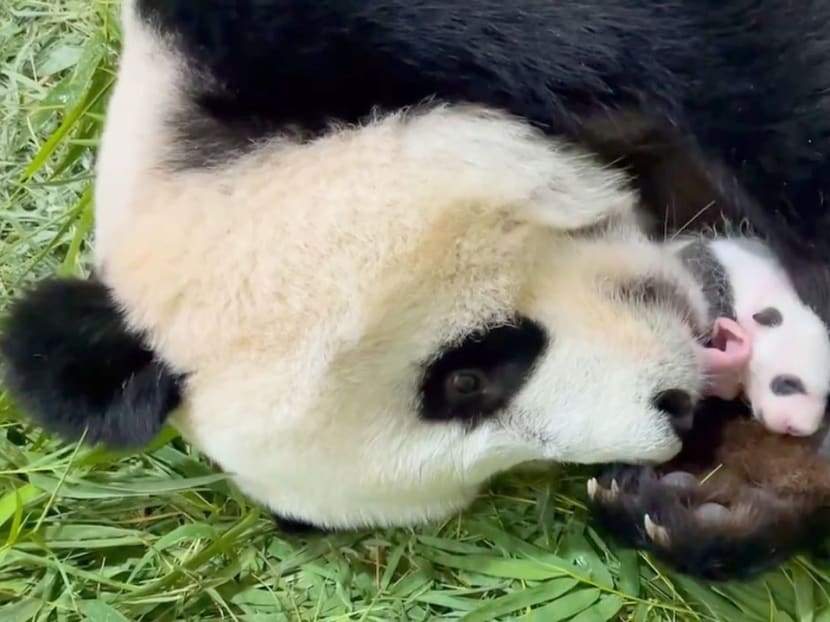
The new mother licks her cub.
SINGAPORE: When he saw the beating heart of giant panda Jia Jia’s foetus on the ultrasound machine, Wildlife Reserves Singapore (WRS) vet Heng Yirui wondered if he was seeing things.
After all, Jia Jia had taken him and his colleagues on a “roller-coaster ride” for years. She had shown signs of pregnancy before but was never truly pregnant.
“She would lactate, she would have some milk, she would feel very uncomfortable in her tummy. She would go off her food... Her uterus would also be thickened, sometimes filled with fluid as well. But she just wasn’t pregnant,” said Dr Heng.
So, the ultrasound scan on August 10 was routine.
But just as he was about to end the procedure, the vet spotted “strange abnormalities” not seen in previous years – there was something moving in Jia Jia’s uterus.
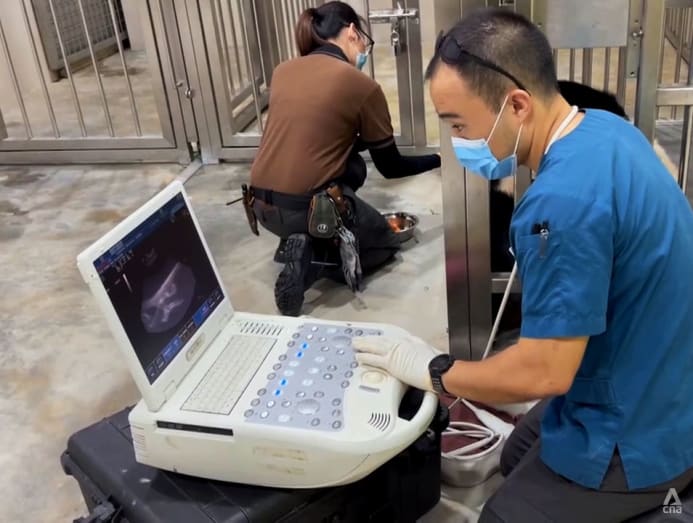
Dr Heng did not tell the panda’s caretakers what he had seen until the scan was over. Then he phoned his boss, Dr Abraham Mathew, WRS’ assistant vice-president of veterinary services.
When he went up to the office and told his colleagues taking care of the pandas the news, they were in disbelief. “This was already at the end of the day – 5.30, 6pm – everyone was winding down and usually when I turn up, I might be joking,” he recounted on CNA’s Talking Point programme.
Some told him, “You’ve got to be kidding, don’t do this kind of thing to us right now.”
Dr Heng played them the video of the beating heart, and the team started whipping out their phones and running around. “Everyone was just so happy, so ecstatic,” he said.
The vet was excited but also a little panicky “because we have waited for so many years for this one moment, and this is the time for us to execute all these plans… to welcome this baby."
Giant pandas were once endangered, but conservation efforts including habitat protection have boosted their numbers.
There are now over 1,800 of the bamboo-chomping mammals in the wild and over 600 of them in captivity in China and zoos around the world. They are considered a vulnerable species.
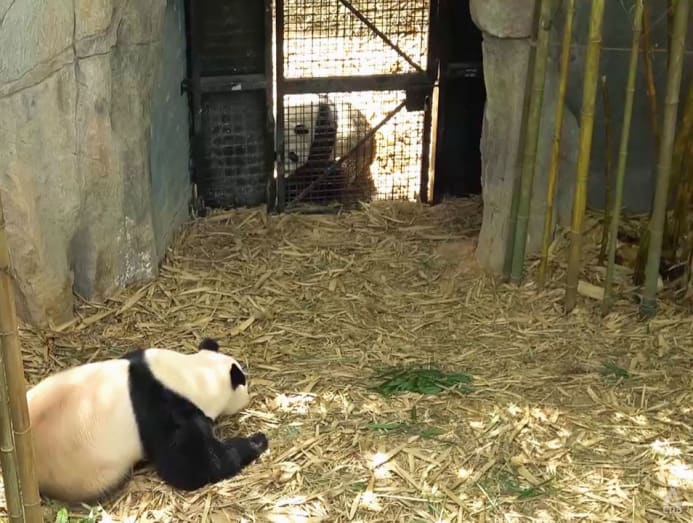
Efforts to get Jia Jia and Kai Kai to mate began in 2015, three years after they arrived from Sichuan in China on a 10-year loan. Jia Jia is now 13 while Kai Kai is 14.
ALL ABOUT THE PEE
The solitary bears had separate enclosures but a window between the two dens allowed them to smell, see and get used to each other, WRS’ vice-president of exhibit design Cham Tud Yinn told Talking Point host Sharda Harrison.
At the end of 2014, WRS adjusted the photoperiod (the length of day) and temperature in the panda complex to reflect the seasonal changes of their natural habitat, said Trisha Tay, head animal caretaker for pandas. This resulted in Jia Jia having her first oestrous cycle, or being in heat, in 2015.
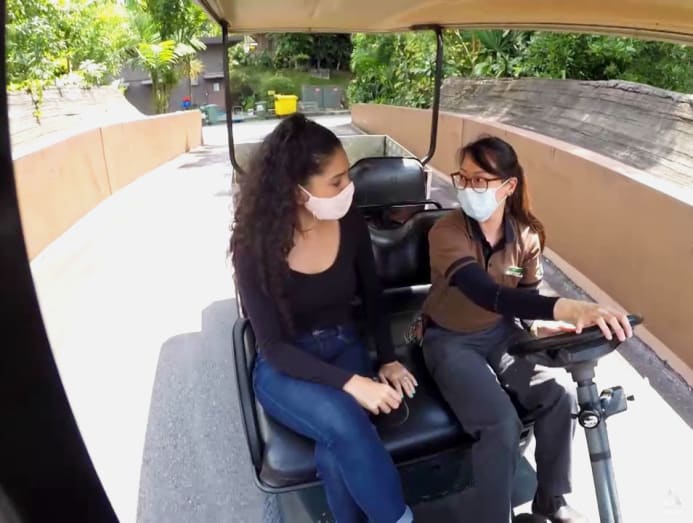
The caretakers also collected the pee of both pandas and placed the liquid in each other’s dens during mating season. To get the pandas more interested in each other, they also got to swap dens in order to get many more whiffs of the other’s scent.
The team needed to take Jia Jia’s pee frequently to determine her oestrogen levels, so the caretakers taught her to pee on command by giving her a cue and rewarding her for urinating. The “smart bear” picked it up quickly, said Tay.
WATCH: How It Took 6 Years to Breed Singapore's First Panda Cub (23:22)
WRS endocrine analyst Josephine Kawi is the team member most keenly acquainted with Jia Jia’s hormones, having monitored them since the latter first ovulated in 2015.
Caretakers collect Jia Jia’s urine once a day outside of the breeding season, and twice a day in the lead-up to it. During the breeding season, the team collects every single sample it can. Kawi runs a test called the enzyme immunoassay to read Jia Jia’s hormone levels.
Over a two-week period, she monitors as Jia Jia’s hormones start to rise. When the bear’s oestrogen peaks, Kawi would inform her colleagues that Jia Jia has ovulated and “now it’s time to either put them together or perform the insemination”.
“I have a very intimate relationship with her hormone levels,” she declared.
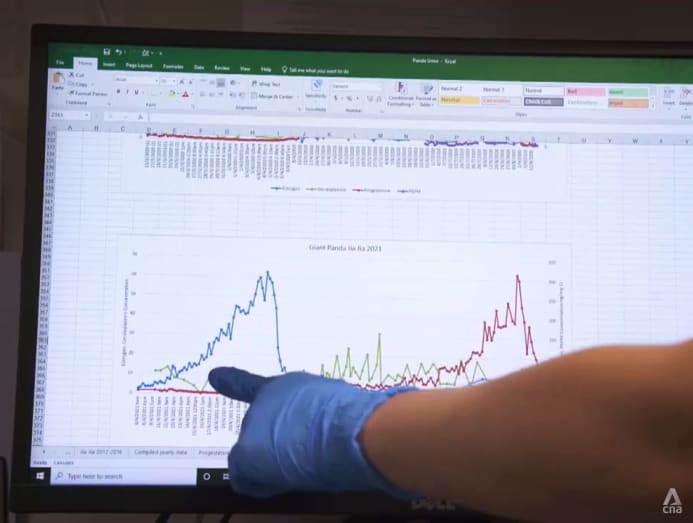
Time is of the essence because Jia Jia is only fertile for 24 to 48 hours each year. This is also why pandas are notoriously hard to breed.
NATURAL AND ARTIFICIAL ATTEMPTS
For the first three years from 2015 to 2017, WRS let the two pandas mate naturally and also did artificial insemination, where either fresh or thawed semen is injected directly into Jia Jia’s cervix during ovulation.
After three unsuccessful years, the team tried only artificial insemination for two years, in 2018 and 2019. Still no cub.
New research was showing that birth rates from natural mating were much higher - 60.7 per cent - compared to 18.5 per cent from artificial methods, said Tay.
Male giant pandas also reach full reproductive maturity from age 10. So last year, the team decided to let Kai Kai have another go at natural mating and skipped artificial insemination. Kai Kai showed “great progress” from his younger days, said Tay.
His improvement was also the result of human help. To strengthen his hind legs, which he needed to mount Jia Jia, caretakers conditioned him to do squat exercises. “He would sigh every time we wanted to do this,” observed WRS keeper Norfaizah Abdul Aziz.
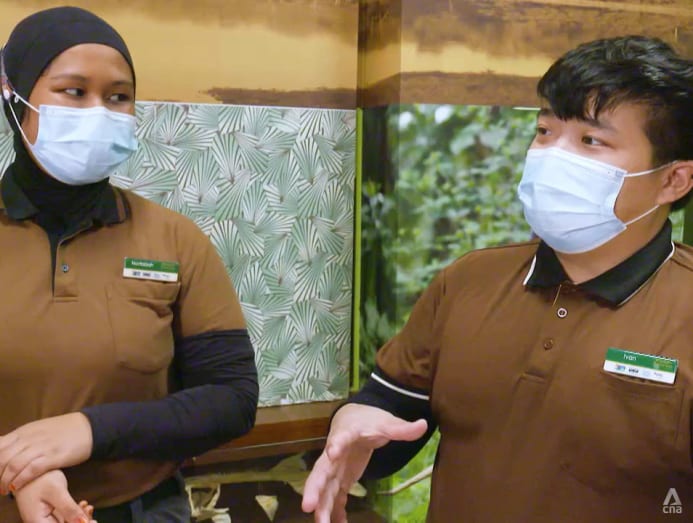
For enrichment, the caretakers would tie bamboo or other goodies in higher positions that required him to climb or stand on his hind legs. To top it off, they let Kai Kai watch videos of how other pandas get it on.
But there was still no cub.
This year, the plan was to try natural mating with artificial methods as a back-up, said Tay. But the first part of the plan was scuppered when Kai Kai got “a bit aggressive”.
The pandas were separated and Jia Jia underwent artificial insemination on April 24 during the final stretch of her fertile period – the 47th hour of the 48-hour window.
The procedure was the same as in previous years, but the team was a lot more confident and comfortable because of guidance by various experts over the years, said Dr Mathew.
“Also, the procedure this year was extremely smooth. Sometimes we get all kinds of complications – her bladder may be too full, there’s urine contamination, things like that. We didn’t have any of that this year.”
After the insemination, they tilted Jia Jia slightly to let gravity help with the flow of semen. “We kept her in this position for a good 10, 15 minutes. This time, we had very accurate placement of the semen into the reproductive tract of Jia Jia,” said Dr Mathew.
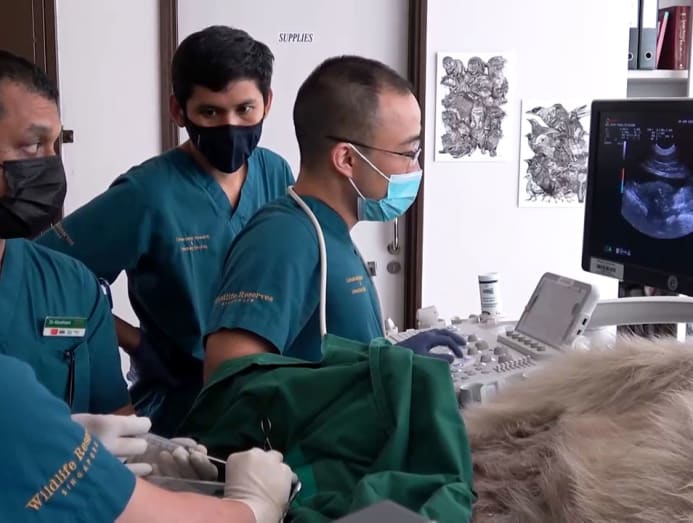
WATCHED MAMA LIKE A HAWK
The vets monitored her clinical signs and behaviour like a hawk. They performed ultrasound scans weekly, stepping it up to twice a week sometime in August. Research has shown a baby would be born in seven days from the time a foetal heartbeat can be detected, said Dr Heng.
When the pregnancy was confirmed, everyone swung into action even as they took pains not to stress Jia Jia too much because pandas can resorb or miscarry the foetus.
Two caretakers monitored her 24/7. They recorded behaviour such as her vulva licking frequency and whether she was having contractions, said Tay.
They prepared the tools needed in the event the first-time mother abandoned her cub or was aggressive. “We had to have cub retrieval tools to retrieve the cub safely as we were not allowed to go into the den with her,” Tay explained.
The veterinary department readied the incubator room and hand-rearing equipment such as bottles and milk formula in case it needed to take over the rearing of the cub, she added.
When the cub was born on August 14, junior keeper Ivan Ang was so emotional that he cried. Tay was “over the moon” and heaved a huge sigh of relief when Jia Jia began caring for the newborn, picking it up gently and cradling it.
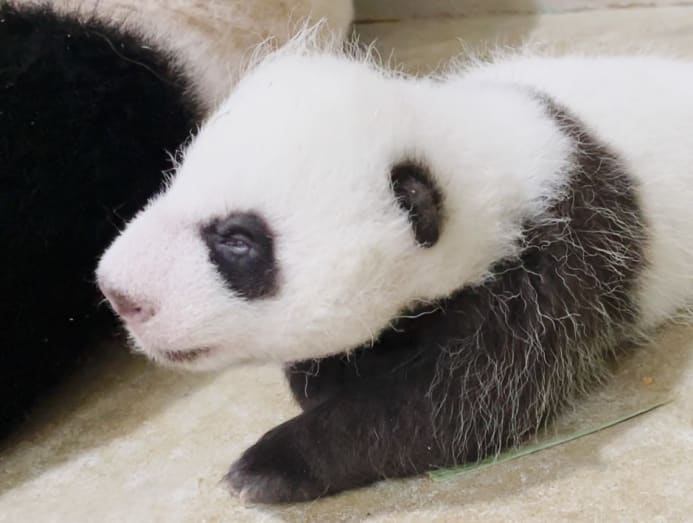
The new mother seemed more tired in the first few days and would sigh when she had to wake up to attend to the cub, said Tay. Jia Jia nurses the cub and licks it to clean it and help it defecate, resting in between.
She did not eat much for the first two weeks and the caretakers kept her hydrated with an electrolyte glucose solution. After about 16 days, she started eating some leaves and is “doing great”, said Tay.
The cub, which was revealed to be a boy at about four weeks’ old, has been growing and developing black-and-white markings. Pandas weigh 200 grams or less at birth and are blind and pink.
They are considered independent when they are 18 months to two years old, and that is when the cub could say goodbye to Jia Jia and head to China, said Dr Cheng Wen-Haur, deputy chief executive of WRS.
WRS is in talks with the Chinese authorities to extend Kai Kai and Jia Jia’s stay beyond next year. Dr Cheng has said that if the extension comes through, it would allow his team to plan for another breeding season for the pair.
Another roller-coaster ride, perhaps?
Catch the full episode of Talking Point: Hello Panda! What Does It Take To Breed One? here. The programme airs on Channel 5 every Thursday at 9.30pm.








